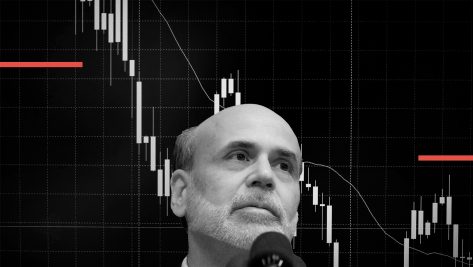From a superficial point of view, trade credit is limited to one supplier and one customer. However, new research shows that its extension may have important consequences for the entire playing field, corporates and banks included. Therefore, when making decisions on how the supply chain should be financed, it is important to take a step back and understand how trade credit can impact the greater context.
The origin of trade credit
Trade credit is the relaxation of payment terms and conditions extended by a supplier to its customer. By being able to buy now and pay later, the customer’s short-term financing constraints are somewhat alleviated. Indeed, trade credit is commonplace in almost all industries, and while credit terms may vary greatly from one industry to the next, research has shown that within the same industry, they are relatively similar. This phenomenon then begs the question: Where does all this trade credit come from in the first place?
Traditionally, trade credit has been seen as a way for companies to obtain financing when bank credit is not available or is too costly. Thus, when banks do not lend, suppliers can be counted upon to do so in their stead. Yet, even though it is the suppliers that provide trade credit, not all suppliers extend it, nor do they extend the same amount. To understand why this is the case, we must take one step back, past the supplier.
Recent research has shown that one of the best predictors of whether suppliers extend trade credit is whether they themselves have easy access to bank liquidity. Specifically, in a new paper, Profs Shenoy and Williams show that when a company has an available bank line of credit, it is more likely to extend credit. Additionally, the more a supplier has drawn down its line of credit, the greater the amount of credit it generally extends to its customers. What this tells us is that although banks are not directly involved in the process, they are nevertheless a key piece in the trade credit puzzle.
One of the best predictors of whether suppliers extend trade credit is whether they themselves have easy access to bank liquidity.
The Role of Banks and External Credit
This has important implications for the functioning and dynamics of the supply chain, for which we provide two examples. First, one further study by Profs Boissay and Gropp has shown that when a customer defaults on its supplier, that supplier, in turn, is likely to default on its own supplier. This induces a chain of trade credit defaults in the supply chain that perpetuates upstream and may involve several firms. This chain of default tends to end only with suppliers with “deep pockets.” In other words, suppliers with access to bank credit or equity capital are the ones that tend to absorb payment default and stop the chains.
Second, our own research shows that the availability of supplier trade credit is seen by customers as a sort of insurance mechanism. In case of an emergency, customers with restricted access to banks and outside capital, for example, must rely much more on their own internal funds. It is well known that financially constrained companies will stockpile cash for a rainy day; however, this is not optimal since this cash could be instead used to invest in valuable projects. Access to suppliers with bank access allows constrained customers to lower their cash holdings and possibly divert it to other uses. Moreover, not only do suppliers with access to external finance allow customers to let go of cash, but we once more find that their customers tend to receive more trade credit overall. We think that this link between supplier constraint and balance sheet liquidity (via trade credit) has gone relatively unnoticed.
Trade Credit and Free-Riding
Supply chains are not, however, an isolated dyad of a supplier and customer. Companies often have multiple suppliers, and each of these may offer trade credit on their own terms. In most cases, the relationship of interest is the one between a supplier and its customer. Yet, perhaps one often overlooked aspect of trade credit is how it can affect competitors.
When a supplier offers trade credit, this relaxes the financing constraints of the customer. Prof. Jiri Chod shows that, inadvertently, this automatically benefits other suppliers, as they now may not have to extend as much trade credit to the same customer. This has two implications: 1) suppliers free-ride off of their competitors’ trade credit extensions and 2) realizing this, there is a game theoretic mechanism by which a less-than-optimal level of trade credit may be offered. Thus, a supplier extending trade credit realizes that its competitors benefit from this, inducing the supplier to offer less trade credit to begin with. This second point is especially true for those firms transacting highly substitutable products, as the number of possible suppliers is even greater.
In such cases, if customers are not able to get sufficient trade credit from their suppliers, they may begin favoring bank credit. It is not difficult to then devise a thought experiment whereby a bank concludes that the number of suppliers is artificially low because of the buyer’s reliance on the supplier-provided trade credit offers. If, then, this bank offers and implements a supply chain finance program for the customer (in this case, the corporate buyer), the door may be opened for more suppliers, which could of course mean more business for the bank. Similarly, for the buyer this scenario provides greater choice of supplier and supply chain stability.
Trade credit helps alleviate the customer’s short-term financing constraints.
Alleviating Supplier Competition
To recapitulate, trade credit helps alleviate the customer’s short-term financing constraints. From the point of view of the supply chain, this is most beneficial when a large supplier with relatively unrestricted access to bank credit or external capital extends trade credit to a smaller, constrained customer. Yet, despite the abundance of academic research and the widespread use of trade credit, the question of why smaller and more constrained suppliers extend trade credit to their larger customers remains. Walmart, for example, borrows more from its small suppliers than it does from bank and bond markets. This phenomenon is somewhat puzzling for two reasons. First, large corporate buyers tend to have lower financing costs than their smaller, constrained suppliers. In this case, longer credit terms are sub-optimal for the entire supply chain. Second, it is well known that longer repayment terms have a significant negative impact on smaller suppliers, as their limited capital becomes further tied up.
Most often, it is suggested that this phenomenon exists due to bargaining power: buyers with greater power simply mandate trade credit from their suppliers, who thus sacrifice their growth in order to meet these demands. Yet, new research by Prof. Heikki Peura suggests that there may indeed be a benefit for suppliers. Consider, for example, two similar suppliers providing the same product to a single buyer. In the absence of trade credit, the buyer will of course purchase from the supplier offering the lowest price, creating a scenario whereby the suppliers are induced to compete on price and continuously undercut each other.
With trade credit, however, the suppliers further expose themselves to future liquidity shocks or credit crunches, resulting in higher financing costs. To counteract this, the suppliers will price their products less aggressively (in other words, higher) than they would under the no-trade credit scenario. In other words, in certain cases, trade credit can alleviate horizontal competition and even lead to higher supplier profits.
Although the industry is thus moving towards more exotic and specialized supply chain financing solutions, trade credit still has a large role to play as this industry evolves.
© IE Insights.











